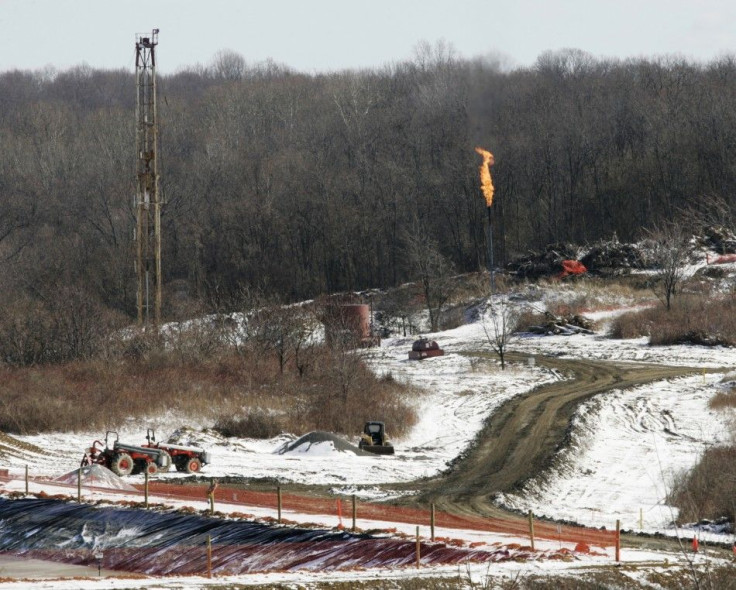Fracking Violations Decreasing In Pennsylvania: Report

A study released on Tuesday by the University of Buffalo's Shale Resources and Society Institute suggests Pennsylvania is getting better at regulating natural gas drilling, and that the state has a regulatory model that New York could implement as it considers opening its own doors to high-volume horizontal hydraulic fracturing.
The study, which was funded by the university, looked at thousands of wells throughout Pennsylvania, and it found that from 2008 through 2011, the number of violations decreased, suggesting the state's regulations are helping bring the number of violations down.
Out of 4,000 wells, the report's authors studied close to 3,000 violations reported to the state's Department of Environmental Protection between January 2008 and August 2011.
Of that number, 62 percent of the violations were administrative in nature and could have been prevented. The remaining 38 percent were environmental and included major incidents, including land spills, blowouts, gas migration and venting.
As time went on, however, the number of violations in relation to the number of gas wells dug started falling, decreasing by 58.2 percent in 2008 to 40.3 percent in 2009, and to 30.5 percent in 2010. By the first eight months of 2011, the report found the number of violations dropped further to 26.5 percent.
While difficult to conclusively illustrate causation between actions and decreases in environmental violations, the history of regulations in Pennsylvania suggests such a relationship may exist, the report said.
The report suggests the state's gradual adoption of added regulations and industry partnerships between 2008 and 2010 have forced companies to, for example, identify wastewater treatment and storage sites, comply with new wastewater discharge standards, launch an enforcement campaign, and have contributed to the drop in drilling violations as witnessed by the report.
Regulators kind of set the stage by flagging even small things, and that sent a signal to the industry 'that hey, we have to be on our toes,' said Timothy Considine, an economics professor at the University of Wyoming and an expert on petroleum market analysis, who's one of the report's head authors.
Considine said much of the state's regulatory policies had to be revised and updated to cater to high-volume hydraulic fracturing, and tha,t as a result, the state has over time become better suited to regulate the industry than it was back in 2006, when development on the Marcellus Shale formation started picking up steam..
We didn't really do any regression analysis, Considine said of what mostly caused the actual drop in violations. Both [industry and regulation] work in tandem.
New York state regulators remain uncertain as to their ultimate stance on hydraulic fracturing and are reviewing proposed regulations. They could issue the first permits for high-volume hydraulic fracturing in New York by year's end.
If so, the report has a few regulatory suggestions: For example, New York could require that companies test their blowout prevention systems and complete a regulatory review of the layout of a proposed well to avoid land spills.
© Copyright IBTimes 2025. All rights reserved.





















